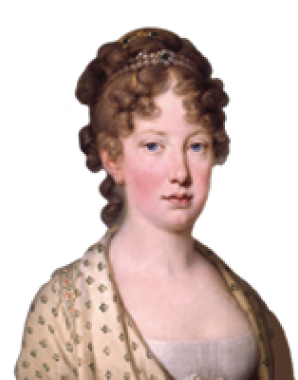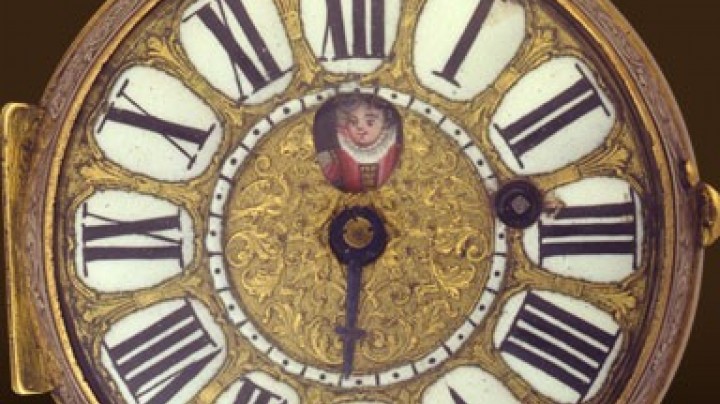Leopoldina – a Brazilian patriot
Leopoldina not only contributed the golden yellow of the Habsburgs to the Brazilian flag but also worked actively in other respects to help build up the new Empire of Brazil.
Following the proclamation of independence in September 1822 there was a general air of joy and enthusiasm. Leopoldina threw herself into the work, designing armbands and emblems – a golden yellow triangle was sewn onto a green background. The green immediately came to stand for the House of Bragança, and golden yellow was already widely familiar as the colour of the Habsburg dynasty. Today green and yellow remain the dominant colours in the Brazilian flag, and the yellow is still there in homage to the Habsburg Princess Leopoldina. Leopoldina also dressed Pedro’s Imperial Life Guards in a new uniform modelled on that of the Bohemian Guards. The Cortes was fuming: the Brazilians are already half Austrian.
Leopoldina prepared the coronation ceremony, designing the coronation regalia herself. The Austrian diplomats were shocked by the prospect of a coronation, for Pedro was not emperor by the grace of God, but an emperor chosen by the people, and that brought to mind the dreaded name of Napoleon. In spite of all objections, however, Pedro was crowned on 12 October 1822, his 24th birthday. He took the title of Constitutional Emperor and Perpetual Defender of Brazil.
Work immediately began on improving the organization of the Imperial Realm of Brazil. Hospitals were set up in empty houses; a navy was needed, and since Leopoldina was able to speak English she persuaded Lord Cochrane to command it.
An important detail, which Leopoldina had noticed soon after her arrival in Brazil, was the need for organized immigration. As she wrote to her brother Ferdinand in January 1818: ‘In other respects this country is backward in culture and if we do not increase the population it will be difficult to change this’.
The physician Dr Georg Schäffer was commissioned by Leopoldina to advertise in Vienna for people wishing to emigrate to Brazil, and in June 1824 the first German-speaking immigrants arrived in Rio de Janeiro.
All of these activities show that after signing the declaration of independence Leopoldina felt herself to be a Brazilian patriot – or perhaps she wanted to make herself into one. For with this signature she had relinquished all hope of ever returning to Europe or seeing her family again. Probably in the precipitate sequence of political events she was not able to assess the full implications of her decision. In any case, after José Bonifácio was banished (in November 1823), she once more found herself with no one with whom she could enjoy a congenial exchange of ideas.
Her brief friendship with the Englishwoman, Mary Graham, had reduced the stress of life as an émigrée, but Leopoldina suffered greatly from ‘saudade’ (Portuguese for homesickness or melancholy longing).














